Kai Chinese Michelin Restaurant
Posted on Friday, 30th August 2013
Kai Chinese Michelin Restaurant opened in 1993. It was awarded its first Michelin star in 2009, a star that the restaurant has maintained to this date. It has also won a string of other accolades including Best Chinese Restaurant in the Zagat Survey, the Highest Ranked Chinese Restaurant in The Sunday Times Food List 2012 and a placing as a finalist in Restaurant Magazine’s UK Best Dishes Awards. Celebrity chef Ken Hom also recommends Kai as his ‘go-to’ restaurant in London for dinner.
Kai is beautifully and tastefully decorated. There are the usual traditional touches of the Orient such as a fish tank and the giant Buddha heads, and to round off the glamorous finish modern glass pillars, soft, sexy lighting and expensive red tiling have been used. Head chef is Malaysian born Alex Chow who began cooking at the prodigious age of 14. He fine-tuned his skills at the famous Fullerton Hotel in Singapore before moving to London and to Kai in 2004.
Kai’s menu offers up a complex blend of modern interpretations of Chinese food as well as the more traditional Chinese dishes. It is unique and represents a compilation of special recipes that are original to the restaurant, some of which draw on ingredients not commonly used in Chinese cooking. That said the essence of the food stays true to its Chinese roots. The results are therefore a mixture of the familiar tinged with touches of the West.
The menu makes for a scintillating read and there were many dishes we wanted to try, and try we did. We started with a divine Tan-Jia’s broth (£18), a duck and carrot soup with lobster oil, a medallion of lobster, blanched baby spinach and shitake mushrooms. There was a beautiful flavour coming through from the thick, rich soup, and it made for a heavenly combination with the sweetness of the lobster. This was nothing less than classy, and it reminded me of the kind of soups served at Chinese wedding banquets in the best hotels in Hong Kong. We also opted for some matching wines with our meal, and for the soup the sommelier paired it with a 2011 Chenin Blanc, Saumur L’Insolite, Thierry Germain, Loire Valley, France (£13) that had a nice balance between acidity and sweetness.
A perfectly seared diver scallop (£12) was big, fat and juicy, and perfectly cooked with an opaque core. Perched on top of the scallop was a spicy XO sauce that added a depth of complexity and spiciness to the scallop. Lotus root crisps provided a crunchy touch, and some nicely cooked stir-fried vegetables of sugar snaps, baby corn, leek and shallots with garlic rounded off the dish.
Slow cooked egg (£16), cooked sous vide at 62c for 45 minutes and served on a crispy pancake with Royal Beluski caviar and black truffles, was also amazing. The runny egg married beautifully with the soya dressing, and the caviar added both flavour and dimension to the dish. The pancake was also impressive for its thinness and lightness.
Wasabi prawns (£17), crispy fried prawns served with a mild wasabi mayonnaise, were also delicious. The prawns were punchy with flavour and the gentle hints of wasabi added a delicate twist to the dish. Fresh mango cubes mixed with a sweet chilli sauce, chopped mint and basil seeds gave the final product a touch of sweetness as well as fragrance. The matching wine was a Demarne-Frison ‘Goustan’ NV (£16) that had a lovely depth.
Soft shell crab (£14) was moist and meaty with a light and crispy potato starch batter. Served with julienned Thai green mango, carrots and shallots, there was also a yummy dressing of fish sauce, honey and shallots that was tangy and sweet.
For something more Westernised, pan-fried foie gras (£18) was unctuous and oozed with a luscious fattiness. It also had a hint of spice from its coating of 5-spice and chilli powder. There was also a lovely crunchiness running through the dish with the use of caramelised cashews, and a passion fruit dressing was a good match. Garnishes of fresh strawberries and grapes were quite complimentary with their hints of fruity acidity.
Abalone might be an acquired taste for some, but I grew up eating abalone and the braised abalone starter (£45 for a 3-piece half portion) was one of the best abalone dishes that I have ever eaten. In fact, it was one of the most heavenly things that I have ever tasted in my life. The abalone was first steamed on low heat for four hours and then slow cooked in chicken stock for 48 hours for maximum tenderness. Served with a jus made with the braising liquor, oyster sauce, soya sauce and a white truffle essence, the aroma of the fragrant truffle was intoxicating. The final result was a succulently tender delicacy served with a perfectly judged sauce. To round of the dish were some lovely black truffles, shaved at the table, and some crunchy broccolini. For the wine, a Vitovska, Zidarich, Friuli Venezia Giulia, Italy, 2010 (£15) had zesty, delicate orange notes. It was light and fluid and worked well with the abalone.
Kai also has a very good vegetarian selection, and this particular abalone dish is available with bai-ling mushrooms instead of abalone (£21). The mushrooms were also excellent, and texturally it was rather difficult to tell the difference between the mushrooms and the abalone. But if you are an abalone lover like I am, then definitely choose the abalone version for a taste of abalone that is quite unique.
To mains, and a ‘Lobster and lobster’ (£28), Kai’s interpretation of the classic Cantonese lobster noodles with ginger and spring onions was super yummy. The lobster was firm, sweet and perfectly cooked, and the noodles were really classy. They had a light springiness to them that showed off a deft touch in their making. Although I couldn’t help but wish for a little bit more sauce, the sauce of ginger and spring onions had been classically prepared and was delicious and fragrant with the use of coriander. A pairing of Carignan, Villalobos, Colchagua Valley, Chile (£11) was elegant and fruity.
A dish of Chilean seabass (£34), two generous pieces roasted with a caramelised marinade of full-bodied Chinkiang black vinegar syrup, mustard and soya sauce were sublime. The fish had been perfectly cooked and was soft and flaky with a luxurious and silky texture. As for the sauce, it was luscious and slightly sweet with orangey tones. The seabass was served on a base of chickpeas and edamame beans tossed with shiso vinegar, shallots, ginger and chopped chervil that I didn’t necessarily think worked with the fish.
A 5-hour oriental spiced pork belly (£16) with ginger, rice wine, cinnamon and soya was also tasty. The sauce was rich and sweet, and the pork was tender. The wine pairing was a Grenache Blend, Gigondas, Clos De Joncuas, Rhone Valley, France (£14) that was fruity with silky tannins.
Aromatic crispy duck (£31 – half portion) marinated with star anise, ginger, spring onions, cinnamon and Szechuan pepper was unfortunately dry. The half portion was presented whole, then deboned and served in a pancake with cucumber and spring onion condiments, and a homemade duck sauce that was delicious. The pancakes were skilfully made and were as light as a feather. A glass of Nero D’Avola Blend, Sicilia Rosso, Pithos, Cos, Sicily, Italy, 2011(£13) provided a long and fresh finish with notes of prunes and cherries.
A durian soufflé with vanilla, durian tuile and salted caramel sauce (£11) was heavenly. Durian is a strong-smelling fruit, but the well-judged use of vanilla in the soufflé balanced with the durian perfectly. The result was a hint of durian flavour without the smell. As for the soufflé, it was light, fluffy and technically perfect. The final knockout element was the salted caramel sauce that complemented the flavour of the soufflé in the most outstanding way. The tuile was also excellent with a thin and crispy finish.
Coconut and lychees (£11), lychee agar-agar and fruit, coconut sorbet and crème patissière on a bed of caramelised crispy puffed rice, was also delicious, refreshing and delicate on the palate.
A dessert of ‘Peranakan’ mango cake was an incredibly complex dessert consisting of fresh mango slices, mango caviar pearls, a mango cake, gula Melaka palm ice cream and pandan leaf ‘milkshake’ topped with sago crisps and a mango and a kaffir lime sugar tuile. There was no doubting the technical skill that went into the making of this dessert. That said it wasn’t to my taste.
This meal was a resounding success and showed off the most skilful of cooking. The menu had flair and originality, and the quality of the ingredients was first-class. The service was wonderful too – attentive and professional without any sense of pretension. I adored just almost every dish, and there were a couple which blew me away. Who could ever forget the abalone or the durian soufflé? Kai should be a ‘must-visit’ in everyone’s books.
Summary Information
Food rating: 4.5/5
Service rating: 4.5/5
Prices:
As a Chinese restaurant, Kai is best enjoyed by sharing, so prices will depend on not only what you order but how many dishes you order. But as a guide, starters range from £12 to £85 (for the abalone) and mains from £18 to £75 (for the wagyu beef). Desserts are a very reasonable £11.




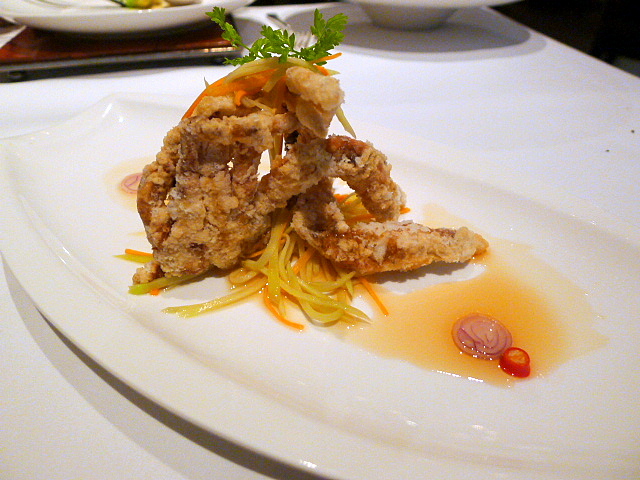
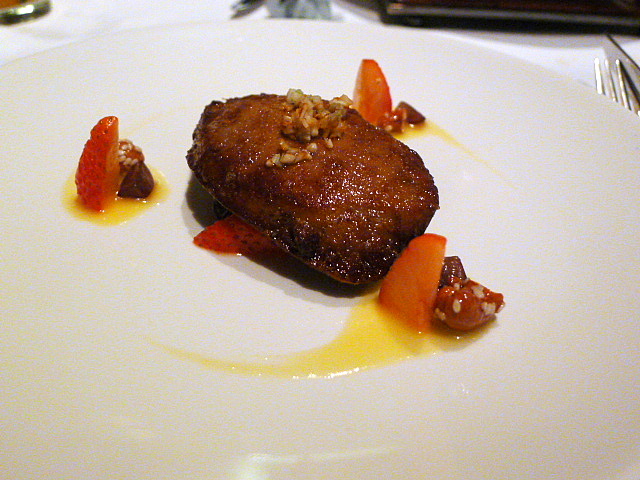
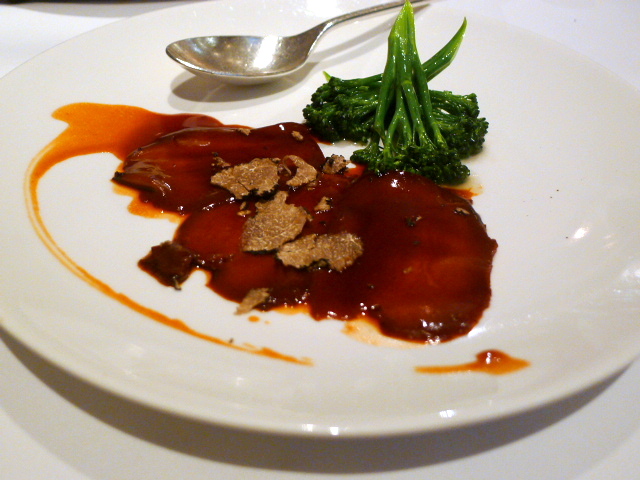
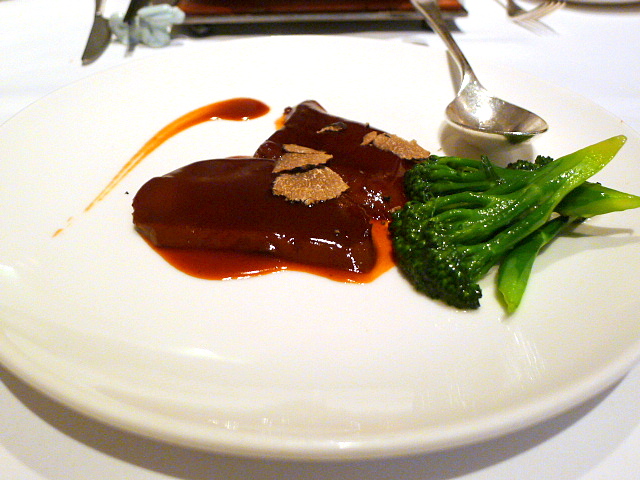
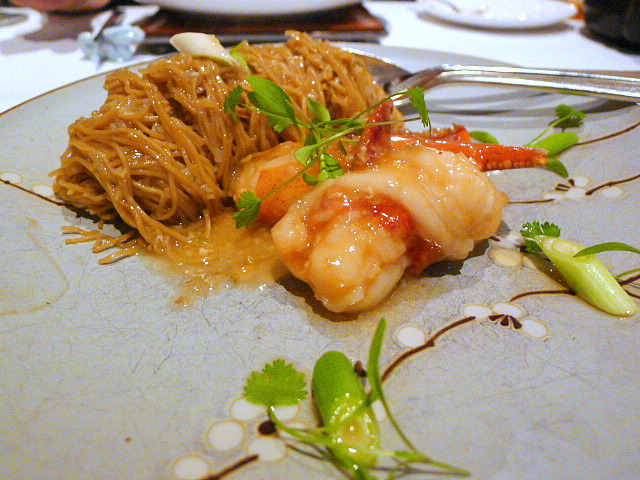
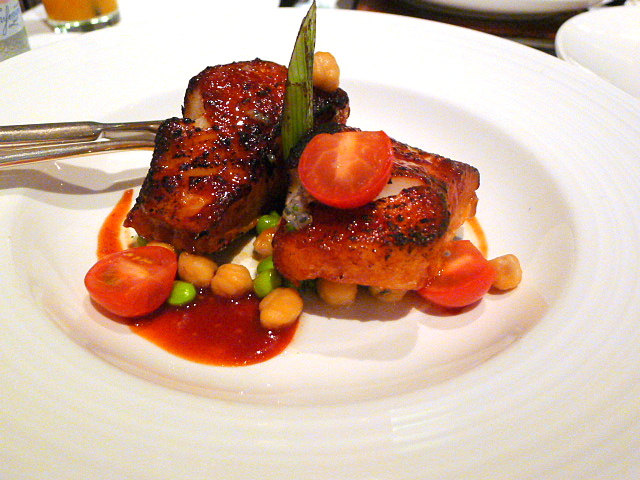
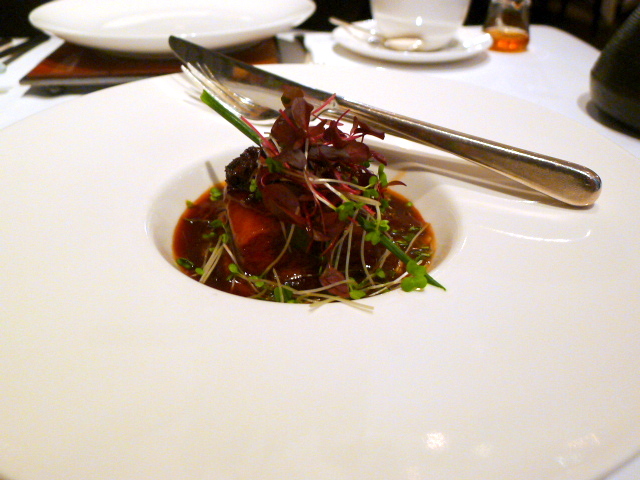
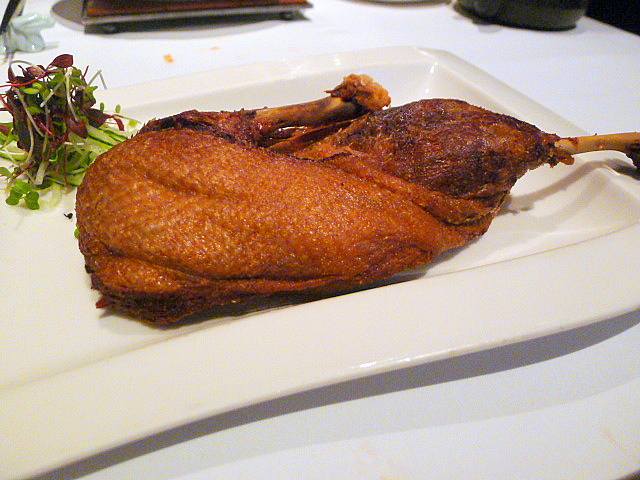
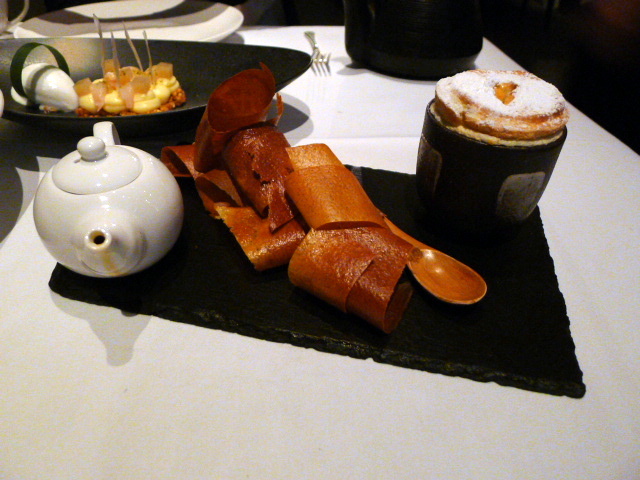

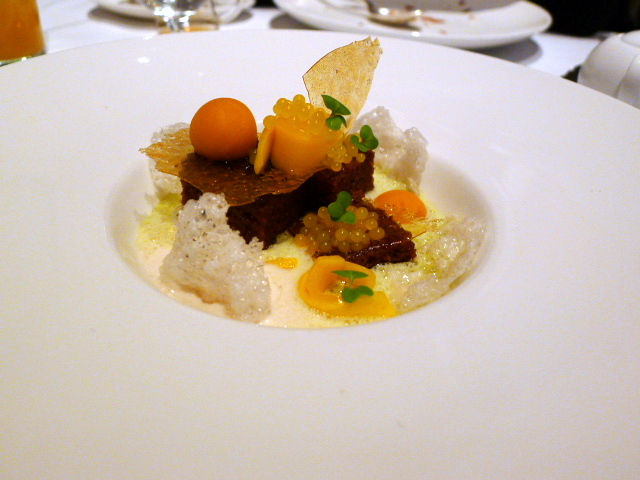

September 5th, 2013 at 9:53 am
Wow, all of these look delicious!